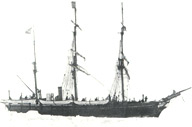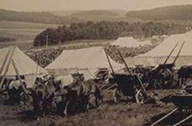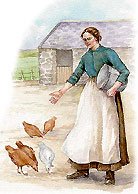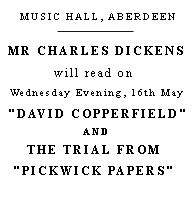The Diary of Robert Walker of Richmond, 1815 - 1890
Diary Extracts Part 1 1856 - 1866
Word Search this page: - PC: Control+F - Mac: Command+F
1856. July 13th
"Active" from Greenland, 146 tons.
 The
whaler "Active" had been built at Lunnan and Robertson's
yard, Peterhead for Captain David Gray in 1853. The Peterhead whale trade
was at its peak in the mid 1800s when the port was home to a fleet of 31
ships. A thousand men manned the whaling ships that hunted the whales and
seals of the Greenland Sea and Davis Strait, and hundreds of tradesmen
and suppliers ashore also had their share of the valuable whale-oil bounty.
Like many of his day, Robert Walker invested in the industry and kept a
close eye on the trials and victories of the often perilous pursuit. His
association with the industry began with his marriage to Violet Sutter,
daughter of whaling master Captain John Souter, in 1840. The Peterhead
trade began in 1788 with one small ship, the "Robert", and steadily
grew through the early 1800s along with the demand for high quality oil
for lamps and industrial lubrication. But, as mineral oil replaced the
demand for whale and seal oil, the fleet numbers steadily declined through
the second half of the century until whaling from Peterhead ceased in 1893.
The
whaler "Active" had been built at Lunnan and Robertson's
yard, Peterhead for Captain David Gray in 1853. The Peterhead whale trade
was at its peak in the mid 1800s when the port was home to a fleet of 31
ships. A thousand men manned the whaling ships that hunted the whales and
seals of the Greenland Sea and Davis Strait, and hundreds of tradesmen
and suppliers ashore also had their share of the valuable whale-oil bounty.
Like many of his day, Robert Walker invested in the industry and kept a
close eye on the trials and victories of the often perilous pursuit. His
association with the industry began with his marriage to Violet Sutter,
daughter of whaling master Captain John Souter, in 1840. The Peterhead
trade began in 1788 with one small ship, the "Robert", and steadily
grew through the early 1800s along with the demand for high quality oil
for lamps and industrial lubrication. But, as mineral oil replaced the
demand for whale and seal oil, the fleet numbers steadily declined through
the second half of the century until whaling from Peterhead ceased in 1893.
Like many other Peterhead ships the "Active" was sold to Dundee
in the late 1800s where the oil continued to be used in the jute industry.
nefa 2001
Image: "Active" in the Greenland ice floes courtesy Arbuthnot Museum
1857. July 22nd
Aikey Fair, Thunder and rain.
 Aikey
Fair and Horse Sale - An annual fair held on Aikey Brae near Old
Deer, Aberdeenshire that dates back to an Act established in 1661, and
coincides with the feast day (mid-July) of St Droston, the patron saint
of the parish. With its origins in horse trading, through the years the
Fair developed into a popular attraction with side shows and other events.
The Fair attracted visitors from all over the North East and it became
a regular meeting place for Scotland's Travelling Folk.
Aikey
Fair and Horse Sale - An annual fair held on Aikey Brae near Old
Deer, Aberdeenshire that dates back to an Act established in 1661, and
coincides with the feast day (mid-July) of St Droston, the patron saint
of the parish. With its origins in horse trading, through the years the
Fair developed into a popular attraction with side shows and other events.
The Fair attracted visitors from all over the North East and it became
a regular meeting place for Scotland's Travelling Folk.
nefa 2001
Image:Traders carts at Aikey Fair,early 1900s courtesy Billy Rennie
1860. January 10th
The ship "Windward" launched.
 From 1810 to 1860 the ship building industry of Peterhead
was at its zenith.
In 1815 there were sixty carpenters employed in the trade and by 1850 between
five and six hundred men in all were employed. The decline of the ship
building industry cannot in fairness be attributed to the decline of the
whale fishing, but to industrial evolutions over which Peterhead had no
control, viz.: - the introduction of steam and iron in ship building.
From 1810 to 1860 the ship building industry of Peterhead
was at its zenith.
In 1815 there were sixty carpenters employed in the trade and by 1850 between
five and six hundred men in all were employed. The decline of the ship
building industry cannot in fairness be attributed to the decline of the
whale fishing, but to industrial evolutions over which Peterhead had no
control, viz.: - the introduction of steam and iron in ship building.
J.T. Findlay, A History of Peterhead, 1933.
The famous "Windward" was built as a sailing whale ship at Stephen and Forbes yard and fitted with engines in 1866. The three masted barque was carvel built from oak, teak and greenheart with iron plated bows. 321 tons gross, length 36m, breadth 8.8m, depth 5.05m.
In 1893 she became the last of her breed to sail from Peterhead.
The ship was sold from Peterhead in 1894 and later served as supply vessel
to the Jackson-Harmsworth Franz Joseph Land expedition and Peary's attempts
to reach the North Pole. The "Windward" was lost at Carey Islands,
Davis Strait, in June 1907.
nefa 2001
Image:The "Windward" North Harbour Peterhead, 1880s courtesy Arbuthnot Museum
1862. December 17th
Telegram from Greenwich to Peterhead. Storm signals for first time.

The "Electric Telegraph" came to Peterhead with the railways,
an instant message sending device that revolutionised world communications.
The first of the town's telegraph offices was at the railway station, opened
in 1862. Until 1880 the only telegraphic communication with Aberdeen was
by a single current Morse instrument which proved wholly inadequate, especially
during the fishing season when regular weather and market price reports
were being sent and received. The new system, installed in 1882, followed
in 1893 by the establishment of the town's first telephone exchange.
nefa 2001

Peterhead Railway Station, as it looked in the early 1900s. Nothing remains of the building today. Courtesy Arbuthnot Museum
1863. May 7th
Went to Longside Feeing Market.
North East farm labourers were hired by farmers for six month working terms at the feeing fairs which took place in the market towns at Whitsun and Martinmas (late November).
 Longside
Market. - The summer feeing market was held at Longside yesterday.
Engagements were very stiff and wages had a downward tendency. Winter wages
were the rule.
Longside
Market. - The summer feeing market was held at Longside yesterday.
Engagements were very stiff and wages had a downward tendency. Winter wages
were the rule.
Ploughmen (foremen) £10 10s. to £11 10s.
Common Ploughmen £9 to £10
Orra Men £6 to £7 10s.
Halflins £2 10s. To £4
Boys £2 to £2 10s.
Women (first class) £4 10s. To £5
Women (second class) £3 to £4
Peterhead Sentinel, May, 1863
Image: "Kitchie Deems" - kitchen dames or girls - were employed at feeing fairs to cook, clean and tend to the chickens. Their working day would start at 5 a.m. and sometimes didn't finish until late into the evening.
1863. October 13th
Went to Aberdeen to see the Queen uncover the Prince Albert Monument.
 The Inauguration of the City and County Memorial Statue
of His Royal Highness the late Prince Consort took place on Tuesday. The Queen, Royal Family
and Suite, left Balmoral at about 10 o'clock, and. posting to Aboyne, reached
that station at noon. Dull and dispiriting as the day was, Union Street
was assuming the aspect of unusual stir, especially in the vicinity of
the statue. A hundred men of various highland regiments kept the line in
Marischal Street which was thickly crowded on both sides, every available
window being also fully occupied. The entourage, led by a compliment of
Cavalry amounted to thirteen carriages. The uncovering was performed by
three men of H.M. Ship "Winchester" hoisting the Royal Standard
in which the statue was enshrouded.
The Inauguration of the City and County Memorial Statue
of His Royal Highness the late Prince Consort took place on Tuesday. The Queen, Royal Family
and Suite, left Balmoral at about 10 o'clock, and. posting to Aboyne, reached
that station at noon. Dull and dispiriting as the day was, Union Street
was assuming the aspect of unusual stir, especially in the vicinity of
the statue. A hundred men of various highland regiments kept the line in
Marischal Street which was thickly crowded on both sides, every available
window being also fully occupied. The entourage, led by a compliment of
Cavalry amounted to thirteen carriages. The uncovering was performed by
three men of H.M. Ship "Winchester" hoisting the Royal Standard
in which the statue was enshrouded.
The Lord Provost delivered the address to which Her Majesty gave the following "most gracious and feeling reply:"
"Your loyal and affectionate address has deeply touched me, and I
thank you from the bottom of my heart. It is with feelings I should vainly
seek words to express that I determined to attend here today to witness
the uncovering of the Statue which will record to future times the love
and respect of the people of this county and city for my great and beloved
husband. But I could not reconcile it to myself to remain at Balmoral while
such a tribute was being paid to his memory."
Aberdeen Free Press and Buchan News Friday,
October 16th, 1863
Image:
Albert, Prince Consort, 1819 - 1861
" Silent Father of our Kings to Be"
by artist Baron Maronchetti
Sited at Union Bridge, Aberdeen.
In 1840, when Albert became Queen Victoria's husband, he was not over popular with the British public, but he did win their respect through the years as an active patron of the arts, sciences and industry.
1865. August 5th
Lifeboat launched at Peterhead.
 The
first lifeboat to be stationed at Peterhead was the Peoples Journal
No. 1, a self-righting open rowing boat which was given to the town by
way of a collection made by the Peoples Journal Magazine. On Saturday 5th
August 1865 more than 20,000 people gathered at Peterhead's North Harbour
to watch a demonstration of rowing by the volunteers who manned the new
boat.
The
first lifeboat to be stationed at Peterhead was the Peoples Journal
No. 1, a self-righting open rowing boat which was given to the town by
way of a collection made by the Peoples Journal Magazine. On Saturday 5th
August 1865 more than 20,000 people gathered at Peterhead's North Harbour
to watch a demonstration of rowing by the volunteers who manned the new
boat.
nefa 2001
"Pride Of Our Isles"
Bernard Gribble's dramatic painting of an early lifeboat assisting a wrecking
steamer, courtesy RNLI
1866. May 15th
Went to election at Ellon. Heard Charles Dickens read.
 Mr Dickens' Reading - Mr Charles Dickens gave his Reading in the Music
Hall on Wednesday evening when the hall was well filled by a very respectable
audience - a large portion being highly fashionable; amongst others, Mr
William Dingwall Fordyce of Brucklay, now M.P. for the County.
Mr Dickens' Reading - Mr Charles Dickens gave his Reading in the Music
Hall on Wednesday evening when the hall was well filled by a very respectable
audience - a large portion being highly fashionable; amongst others, Mr
William Dingwall Fordyce of Brucklay, now M.P. for the County.
The Reading consisted of "David Copperfield" in six chapters,
and the trial, "Bardell v. Pickwick," from the "Pickwick
Papers."
Aberdeenshire Free Press 18th May 1866

